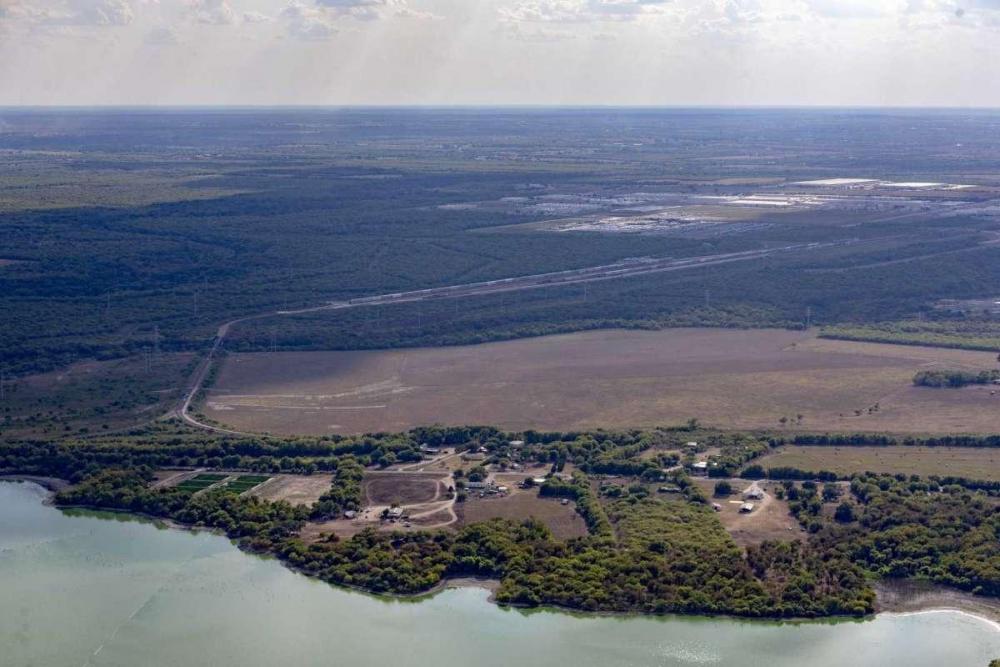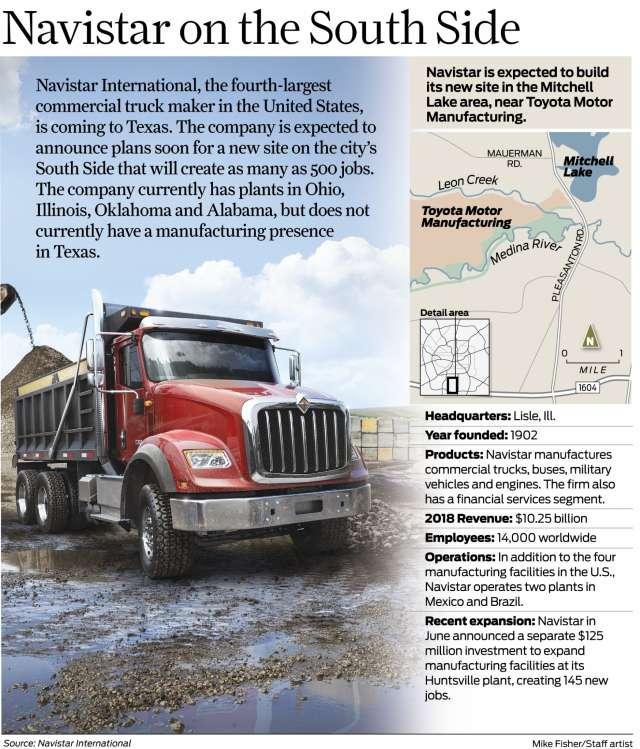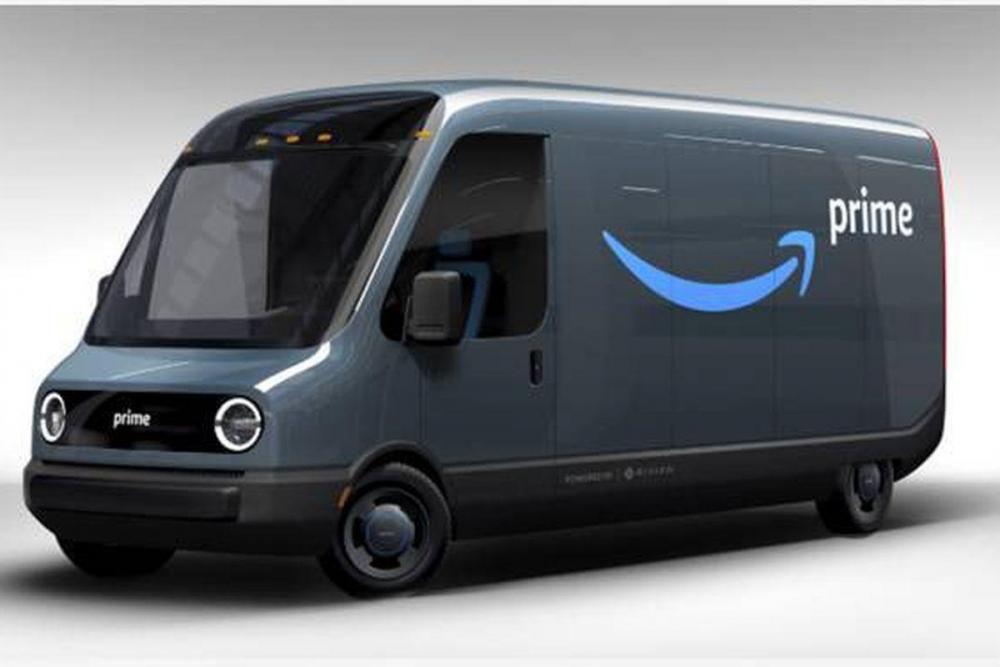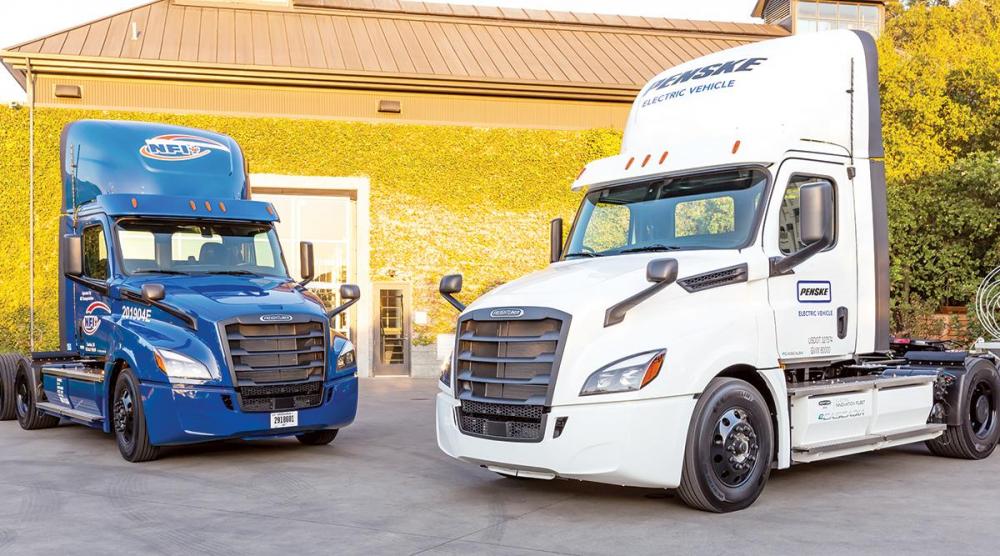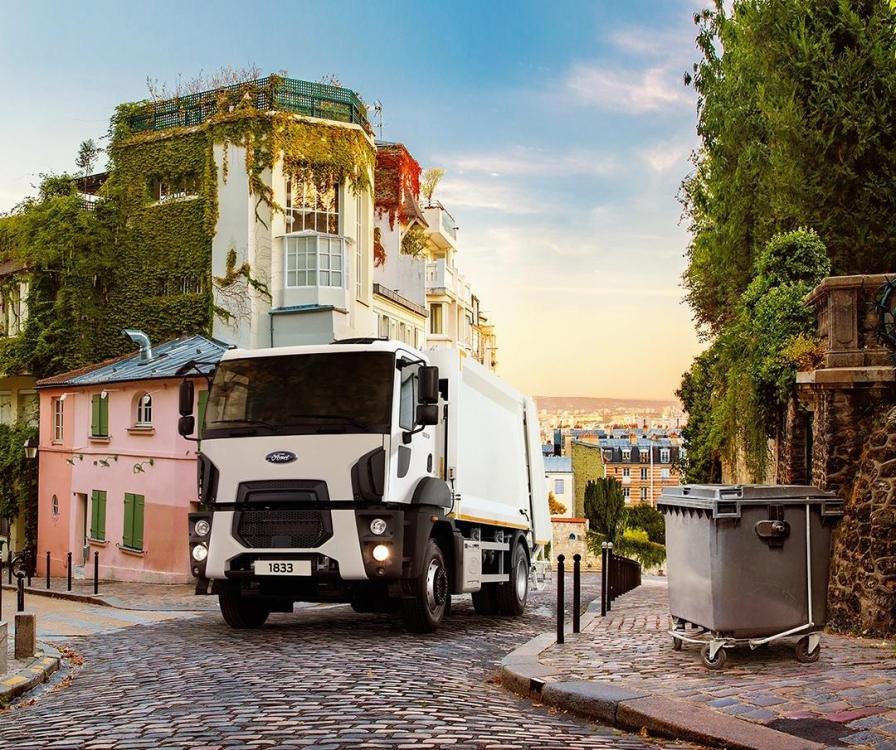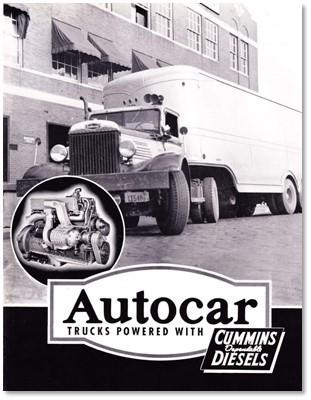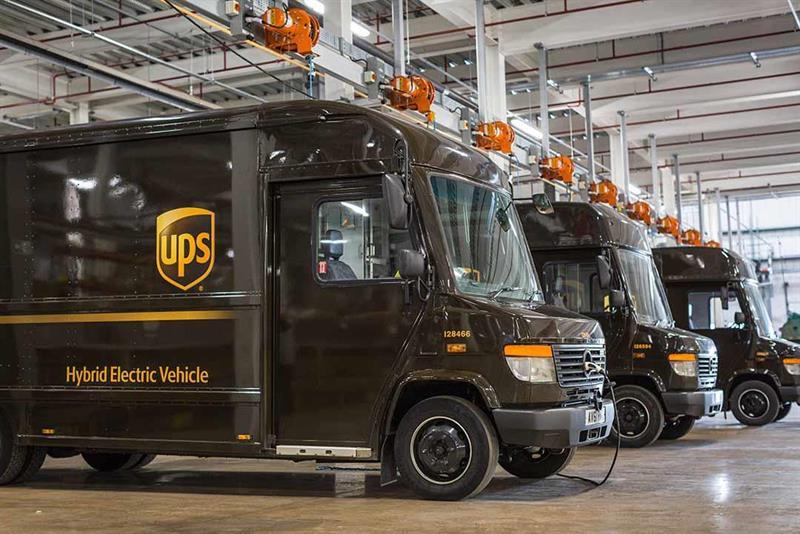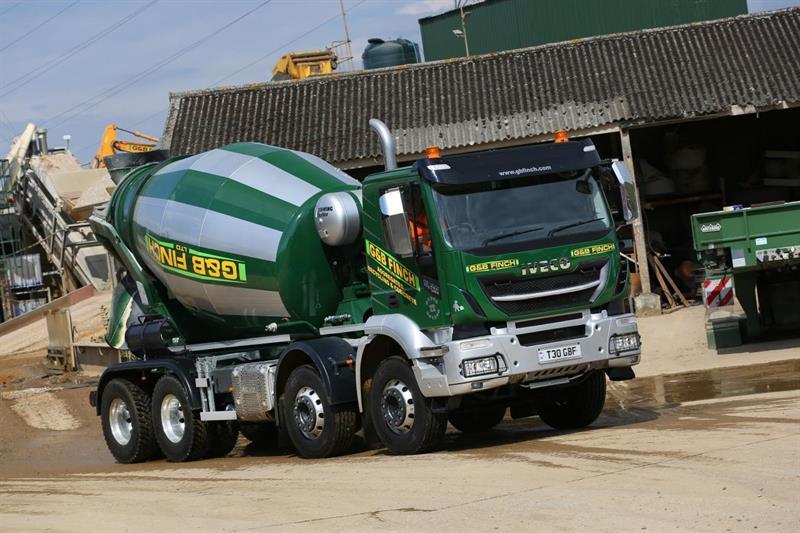
kscarbel2
Moderator-
Posts
18,541 -
Joined
-
Days Won
112
Content Type
Profiles
Forums
Gallery
Events
Blogs
BMT Wiki
Collections
Store
Everything posted by kscarbel2
-
With a CGI (compacted graphite iron) engine block, Ford can stress the engine to such extremes. My judgement on the aluminum cylinder heads is still out though.
-
Ford's 2020 Super Duty diesel tops Ram's torque Michael Martinez, Automotive News / September 26, 2019 Ford said Thursday it will wrestle the heavy-duty diesel power crown from Dodge. Ford said its 2020 F-series Super Duty's optional 6.7-liter Power Stroke V-8 diesel engine will have best-in-class 475 hp and 1,050 pound-feet of torque, improving on the previous version's 450 hp and 935 pound-feet of torque. Ford also said the 2020 Super Duty would achieve a best-in-class maximum towing rating of 37,000 pounds. Ram was first to reach the four-figure torque milestone with its 2019 Ram heavy-duty 3500 pickup, which hit 400 hp and 1,000 pound-feet of torque with its optional diesel engine. Ram's 2020 model will have the same engine specs. Ford made the announcement Thursday at the State Fair of Texas. It unveiled the freshened pickup this year but until now has provided no power figures for its diesel engine. The freshened 2020 Super Duty, which includes the F-250, F-350 and F-450, is to go on sale this year. Ford previously said its newest engine offering -- a 7.3-liter V-8 gasoline engine -- will produce 430 hp and 475 pound-feet of torque. Ford last redesigned the Super Duty for the 2017 model year, when it shed as much as 350 pounds by switching to an aluminum body. The midcycle freshening comes as Ford shifts 90 percent of its capital allocation to producing pickups, vans and utilities. By 2020, roughly 75 percent of its lineup will be updated or new.
-
MAN Truck & Bus Press Release / September 19, 2019 WHAT IS PERFECTION? Is it always higher, faster, further? Or is it more than that? Well, we would say…it is outpacing all that is “standard” – and instead - developing customized engines for special needs. We would say…it is always trying to improve all processes and not resting on the know-how you have. It is…feeling responsible for the customers, …and for this reason simplifying business, …and always trying to offer the most efficient engines. Engines with the lowest fuel consumption, the best power density, an optimum reliability – and a long service life at the same time. We would say... …it is offering the best quality. So, if you ask us, we would say: WE LOVE BEING PERFECTIONISTS. MAN Engines .
-
Ford to Put Struggling India Business Into Venture With Mahindra Bloomberg / September 24, 2019 Ford is set to transfer most of its assets in India to a joint venture with Mahindra & Mahindra Ltd. after failing to make meaningful inroads for more than two decades in the world’s fourth-largest automobile market. Mahindra, one of India’s largest automakers, will own 51% of the new entity. Ford will get equal voting rights and board representation. The venture, to be announced as soon as next week, doesn’t include Ford’s global business services division or an export-focused engine plant in Sanand. Ford’s compensation is likely to be far below the $2 billion it’s poured into India, only to achieve market share of less than 3%. The deal keeps Ford in the heavily populated market while letting it share the financial burden with Mahindra. Ford Chief Executive Officer Jim Hackett is leading an $11 billion restructuring and paring money-losing overseas operations. Global carmakers have had a tough time making inroads into India, which is dominated by Suzuki Motor Corp.’s cheap, fuel efficient vehicles. General Motors Co. scrapped a $1 billion investment in India two years ago and stopped selling Chevrolet models there. The market as a whole faces challenges, with sales contracting for the past 10 months, forcing the industry to cut production and jobs. A final agreement hasn’t been reached and the discussions could still fall apart, the people said. Reuters reported some elements of the venture in April. Latest Foray As envisioned, the new entity will hold most of Ford’s assets in India, including the two car plants it owns in the country. Ford was one of the first automobile companies to enter India when it liberalized the economy in the early 1990s. Ford first entered India in 1926 but shut down that operation in the 1950s. “Ford remains committed to growing its customer base and product portfolio in the world’s fourth-largest automobile market, and will continue to make in India, for India and the world,” Lori Arpin, a spokeswoman for the Dearborn, Michigan-based automaker, said in a statement while declining to discuss specifics. Mahindra declined to comment. The deal will allow Mahindra to sell some Ford vehicles in developing markets under its own brand, the people said. Ford and Mahindra also are jointly developing a mid-sized sport-utility vehicle for India. Back in 2012, Ford had aimed to make the South Asian nation one of its three largest markets by 2020. Most global carmakers have failed to win over buyers in the notoriously price-conscious market led by Suzuki’s local unit, Maruti Suzuki India Ltd., with its strong network of dealers and ubiquitous repair shops. (https://www.india.ford.com/vehicles/)
-
FCA senior manager charged in diesel emissions probe Reuters / September 24, 2019 A senior manager at Fiat Chrysler Automobiles was charged in connection with the Justice Department's probe into excess emissions in diesel vehicles, according to documents unsealed Tuesday. Emanuele Palma, 40, a diesel drivability and emissions senior manager at FCA, was charged with conspiring to commit wire fraud, defraud the United States, violating the Clean Air Act and making false statements about the emissions system used on Fiat Chrysler's U.S. diesel vehicles, according to a grand jury indictment dated Sept. 18. Magistrate Judge Elizabeth A. Stafford entered a not guilty plea on Palma’s behalf. U.S. attorney Timothy Wyse wanted GPS monitoring of Palma because he considered the flight risk “severe,” but he was released on a $10,000 unsecured bond. Wyse said during the hearing that Palma “was the lead manager, the lead engineer of producing deceptive software that went into over 100,000 vehicles.” Wyse said “as a result of his engineering decisions, his management, his lies, that these vehicles on the road admitted dramatically higher pollutants then were allowed by law.” Wyse said Palma then lied to investigators. Palma’s attorney, Kenneth Mogill, is ready to contest the charges, saying after the hearing: “We intend to defend this vigorously.” Conspiracy to defraud the U.S., commit wire fraud and violate the Clean Air Act, carries a maximum five-year sentence with a max penalty of $250,000. Counts two through seven regarding violations of the Clean Air Act come with a maximum two-year sentences with a $250,000 max penalty. Counts eight through 11 that deal with wire fraud carry maximum sentences of up to 20 years and a $250,000 fine. Counts 12 and 13 regarding false statements carry up to five-year sentences with potential fine to $250,000. "We continue to fully cooperate with the authorities, as we have throughout this issue," an FCA spokeswoman said by email. Palma’s name surfaced last year in a federal class-action lawsuit filed against FCA in San Francisco. Palma, while working for supplier VM Motori, wrote an email to colleagues in 2012 saying FCA “knows tEng is the only way to get to 30 mpg, so don’t worry about this topic,” the suit said. He was referring to software called “t_engine” that was capable of detecting whether a vehicle was undergoing emissions testing. Palma’s LinkedIn profile shows that he was VM Motori's manager for diesel engine calibration in Auburn Hills, Mich., at the time of the email and left the supplier in December 2014 to join FCA the next month. FCA bought a 50 percent stake in VM Motori in 2011, and purchased the remaining shares from General Motors in 2013. Civil settlement Fiat Chrysler agreed to pay about $800 million to resolve civil claims from the Justice Department, state officials and customers alleging the company installed illegal software allowing more than 100,000 diesel-powered vehicles to dupe government emissions tests and then pollute beyond legal limits on the road. The settlement did not resolve any potential criminal liability, the Justice Department said when unveiling the agreement. FCA at the time said the settlement did not change the company's "position that it did not engage in any deliberate scheme to install defeat devices to cheat emissions tests." Mark Chernoby, FCA's head of North American safety and regulatory compliance said in that statement: "We acknowledge that this has created uncertainty for our customers, and we believe this resolution will maintain their trust in us." Despite the civil settlement, Fiat Chrysler could face other financial penalties related to the criminal investigation, depending on what it turns up. The indictment could be a sign of more to come, said Peter Henning, a former U.S. prosecutor who’s now a law professor at Wayne State University. “It’s hard to think that one person could create a defeat device and not have it noticed by anyone else,” Henning said. “The whole thing with defeat devices is they’re there to sneak things past the EPA," he said, “so it’s hard to think it would be just one person.” Expanding prosecutions The renewed focus from U.S. prosecutors on FCA's alleged emissions violations follows cases against Volkswagen Group and a number of that automaker's current and former executives over use of illegal software to fool government diesel-emissions tests and mislead regulators and consumers. Volkswagen and some of its executives pleaded guilty to criminal charges in the scandal, and the German automaker paid billions of dollars in penalties. German prosecutors on Tuesday charged former Volkswagen CEO Martin Winterkorn and other company executives in the scandal. A Winterkorn lawyer said the former CEO rejected the claims. He was previously charged in the United States. The indictment unsealed Tuesday says Palma and unnamed co-conspirators "purposefully calibrated the emissions control system" in Fiat Chrysler vehicles to produce lower emissions under federal test cycles and release higher amounts of nitrogen oxides during real world driving conditions. They concealed the those moves from U.S. environmental regulators, the indictment alleged. The alleged fraud allowed Palma and the unnamed co-conspirators to obtain a favorable fuel economy rating that made FCA vehicles more attractive to potential customers, the indictment said. Prosecutors alleged the conduct resulted in deceptive claims to customers that the vehicles featured "clean EcoDiesel engines," the indictment said.
-
You're welcome. We aim to please. Thank you for supporting BigMackTrucks.
-
Scania offers and recommends Allison in severe vocational.
-
Jason Cannon, Commercial Carrier Journal (CCJ) / September 19, 2019 Navistar announced Thursday that it would pump more than $250 million into building a new manufacturing facility for its International brand trucks in the State of Texas. Contingent on the finalization of various incentive packages, the new facility is expected to bring approximately 600 jobs to the San Antonio area. “Over the last five years, Navistar has made significant investments to improve our position in the market,” said Troy Clarke, Navistar chairman, president and chief executive officer. “This investment will create a benchmark assembly facility to improve quality, lower costs and provide capacity to support anticipated industry growth, as well as market share gains.” The new manufacturing plant will build Class 6-8 vehicles and complements Navistar’s existing assembly manufacturing footprint, which includes truck assembly plants in Springfield, Ohio and Escobedo, Mexico. The new investment builds on Navistar’s recently announced plans to invest $125 million in the Huntsville, Ala., engine plant to produce next-generation, big-bore powertrains developed as part of the alliance with Traton. “The new facility will have the flexibility to build Class 6-8 trucks incorporating the most advanced lean manufacturing practices, enabling lower conversion costs and an optimized supply chain,” said Persio Lisboa, Navistar’s chief operating officer. The Texas site is located on a critical corridor along Interstate 35, linking Navistar’s southern U.S. and Mexico supply bases and allows for significant logistic improvements, resulting in lower cost and enhanced profitability. Navistar plans to break ground on the property later this year and anticipates production to begin approximately two years later. Also Thursday, as part of the company’s Investor’s Day, Navistar unveiled its 2020-24 strategy – dubbed Navistar 4.0. Laying out a plan to increase the company’s EBITDA margins to 12% by 2024, Navistar 4.0 includes the following elements: Grow market share and become the number one choice of the customer through new product offerings and customer segmentation; Implement a single platform strategy to optimize use of R&D resources and commonization of parts and tooling; Increase modular design resulting in customer benefits, speed to market and lower product costs; Build a new truck assembly facility in San Antonio, reducing logistics and manufacturing costs; Use the TRATON alliance to provide significant procurement savings, more efficient R&D spend and new integrated powertrain offerings for customers; “Our savings from the global alliance with TRATON are on track to yield $500 million in the first five years, with $200 million in annual savings by year five,” said Walter Borst, Navistar’s chief financial officer. Grow Aftersales revenues with an expanding distribution network, growing private label sales and e-commerce initiatives; Improve financial results allowing the company to invest in growth initiatives, de-lever the balance sheet and fully fund its defined benefit pension plans by 2025. “Navistar is committed to building on the gains of the past five years to improve financial returns to shareholders,” Clarke said. “Navistar 4.0 establishes a clear road map to grow EBITDA margins to 12%, while also winning in the marketplace.” 2020 and longer-term financial guidance In its presentation, Navistar also provided industry and company financial guidance for 2020, including: Industry retail deliveries of Class 6-8 trucks and buses in the U.S. and Canada are forecast to be between 335,000 and 365,000 units Revenues are expected to be between $10 billion and $10.5 billion Adjusted EBITDA is expected to be $775 million to $825 million Manufacturing free cash flow is expected to be breakeven excluding changes in working capital In addition, Navistar plans to grow EBITDA margin from the 8% currently anticipated for 2019 to 10% by 2022. Components of this improvement include higher revenues and market share through new product offerings and market segmentation initiatives; incremental product cost improvements in procurement and manufacturing through supply and logistics savings and lean manufacturing activities; and lower structural costs from active cost management and lower pension and OPEB costs. EBITDA improvement planned by 2024 The company plans to achieve EBITDA margins of 12% by 2024. Components of this additional improvement include development of integrated powertrain offerings, a single platform strategy, modular product design and optimization of the company’s manufacturing footprint. The company summed up its vision by citing unique opportunities: Its new product lineup, quality improvements and uptime focus are gaining market share. Gross margins will grow with the lower costs derived from the TRATON alliance and enhanced manufacturing strategy. Aftersales revenue will grow as market share gains add to the vehicle parc and integrated powertrains improve the parts mix. Substantial improvements in net income as free cash flow is used to pay down debt and fund pension plans. “Navistar’s recent improvements in both market share and financial returns are sustainable and will grow in the years ahead,” Clarke said. “I believe Navistar is the best investment opportunity in the commercial vehicle space.”
- 1 reply
-
- 2
-

-
Jim Parks, Today's Trucking / September 16, 2019 What kind of a truck does it take to keep Alaska’s Thompson Pass clear of snow in winter? Battling average snowfall of 500 inches per year, this Mack Granite snowplow has earned the respect of the DOT crews that patrol the snow capital of North America. Equipment Editor Jim Park accompanied a film crew to Valdez Alaska. .
-
Volvo Trucks to Introduce All-Electric Version of VNR Model
kscarbel2 replied to kscarbel2's topic in Trucking News
-
Heavy Duty Trucking (HDT) / September 19, 2019 As part of Amazon’s plan to combat climate change, CEO Jeff Bezos unveiled Thursday that the company has agreed to purchase 100,000 electric delivery vans from start-up Rivian, known for its electric pickup trucks. The announcement comes after Bezos expressed what he is calling a “Climate Pledge,” the company’s goal to meet the standards of the Paris climate agreement 10 years ahead of schedule, reports CNBC. According to CNBC, Bezos is looking to shift Amazons renewable sources to 80% by 2024, an increase from its current rate of 40%. The company hopes to be totally zero emission by 2040. In this effort, Amazon has agreed to purchase Rivian electric delivery vans which he said will be hitting roads by 2021, and he estimates 100,000 vehicles will be deployed by 2024. The company has already announced an investment of $700 million in Rivian. This move comes at the helm of several multi-billion-dollar investments the young company has acquired over the past year. The company led by founder and CEO RJ Scaringe, includes a fleet of electric pick up trucks and SUVs. The vehicles are assembled in Normal, Illinois. Rivian has not previously announced the development of an electric van. According to a report on Jalopnik.com, the new van will be exclusive to the Amazon partnership and will be produced on a separate assembly line from the R1T and R1S passenger vehicles. .
-
- 1
-

-
Daimler Trucks Announces Battery Cell Supplier
kscarbel2 replied to kscarbel2's topic in Trucking News
Rather than choose an American supplier for their North American market electric trucks, or a reputable global manufacturer like LG and Panasonic, Daimler has chosen communist party-supported Contemporary Amperex Technology Co. (CATL) located in Ningde City, Fujian Province, China. American operators must be made aware, and say no to trucks with party-built components. Build in America.....for America (just as China insists on "build in China.....for China - "What's good for the goose is good for the gander"). http://www.catlbattery.com/ -
Transport Topics / September 20, 2019 Daimler Trucks announced an agreement with battery manufacturer Contemporary Amperex Technology Co. to supply lithium-ion battery cell modules for its electric trucks, including the Mercedes-Benz eActros, Freightliner eCascadia and Freightliner eM2. Series production of Daimler’s electric trucks is expected to begin in 2021. Battery pack assembly will be carried out by Daimler Trucks & Buses at its Mercedes-Benz Mannheim plant in Germany and its Detroit plant in the U.S., according to the Stuttgart, Germany-based company. The manufacturer’s North American operations are in Portland, Ore. The heavy-duty Mercedes-Benz eActros, with a range of around 200 km (124 miles), is in intensive customer trials in Germany and Switzerland. In the United States, the all-electric medium-duty Freightliner eM2 and the heavy-duty Freightliner eCascadia trucks also are in practical customer testing. About 150 vehicles of the light-duty Fuso eCanter are in customer operation in cities such as New York, Tokyo, Berlin, London, Amsterdam, Paris and Lisbon. Headquartered in Ningde, China, Contemporary Amperex Technology has more than 24,000 employees worldwide. .
-
Waste Management? Ford Trucks Wrote the Book
kscarbel2 replied to kscarbel2's topic in Trucking News
-
It speaks volumes that the FBI still keeps Thompsons in their arsenal, a weapon invented in 1918.
-
Some things just naturally go together -- like Autocar Trucks and Cummins Inc Diesel engines. This brochure dates to the late 1940s, but the first Cummins-powered Autocar was built in the mid-1930s, even before the #AutocarDC. Yo, that's 80+ years ago. #ThrowbackThursday #TBT Always Up - Autocar Trucks .
-
That’s shocking news Bob.
-
Ford Launches F-Max Tractor for Global Markets
kscarbel2 replied to kscarbel2's topic in Trucking News
A prototype right-hand drive F-MAX has been spotted in Kent, UK. Ford Trucks is on a roll. -
I’m always looking but rarely see one. I think the lack of drivetrain options is an issue. It’s odd the 2.0L and 3.2L diesels aren’t offered.
-
Both the global Ford Ranger pickup and the Everest SUV are tall......the top of the hood is quite high. But I like it.
-
Transport Engineer / September 9, 2019 Parcel delivery business UPS has introduced a new line of range-extended electric vehicles (REEVs) to its fleets serving Birmingham and Southampton, describing it as “a big breakthrough” for its use of electric vehicles in the UK. The hybrid-electric vehicles have a range of up to 400km, and can automatically switch to electric power when entering urban areas and clean air zones. The vehicles were developed in conjunction with Tevva Motors and part-funded by the Office for Low Emission Vehicles (OLEV) and Innovate UK. They form part of UPS’s ‘rolling laboratory’ strategy to develop a variety of alternatively fuelled vehicles. Ten REEVs have joined the UPS delivery fleet in its Tamworth depot and an additional five in Southampton. Both depots serve locations where the distance from the warehouse to the urban area served is high, and another factor is that Birmingham is set to introduce a clean air zone by 2020. UPS says the current generation of 7.5-tonne electric delivery vehicles have an average range of 100km, which is often insufficient to reach urban drop-off points in cities such as Birmingham and Southampton. However, the new REEVs have an average combined power range of 400km, and can still operate with zero emissions within urban areas on the routes, using geofencing technology to switch to electric model at predetermined boundaries. The bespoke REEV solution comprises a high-performance electric powertrain with an in-series hybrid combination, utilising a significantly smaller and efficient diesel engine that can provide additional range when needed. The vehicles are equipped with a 150kW electric motor providing an electronically limited ability of up to 2,000Nm of torque. The powertrain is supported by a lithium-ion 74kWh battery, giving an operational EV range of at least 100km. “Electrification of the medium-duty truck sector is inevitable, yet many firms and OEMs are still scratching their heads about how and when to make that happen,” says Richard Lidstone-Scott, commercial director for Tevva Motors. “At Tevva, we already have viable technology, proven in real-world trials, which can help companies like UPS reduce emissions to almost zero without compromising their business-critical ability to carry full payloads. What’s more, we’re already working on new technologies to make our solution more efficient still.” In 2018, UPS announced that it is working with UK-based technology firm Arrival to develop a pilot fleet of 35 electric delivery vehicles to be trialled in London and Paris. And, in December 2017, UPS ordered 125 fully electric semi-tractors to be built by Tesla, the largest pre-order to date. .
-
Transport Engineer / September 12, 2019 Essex-based aggregates firm G&B Finch has taken delivery of its first two 32-tonne Stralis X-Way mixers – part of an order for four X-Way trucks, which are specified for different types of operation. Supplied by dealer Northern Commercials, the two 8x4 mixers replace older Trakker models in a 50-strong, all-IVECO fleet. They will deliver concrete to customers within a 20-mile radius of G&B Finch’s main site in Chelmsford – with one homologated for predominantly on-road operation, and another built for regular off-road work. G&B Finch’s first Stralis X-Way mixer is mounted with CIFA bodywork and powered by an 8.7-litre Cursor 9 diesel engine delivering 395bhp and 1,700Nm of torque. It is specified with the ‘On’ set-up, giving easy cab access and maximum visibility for drivers. The second mixer also has a Cursor 9 diesel engine, but tuned to deliver 355bhp and 1,650Nm of torque, and with bodywork by Schwing Stetter. For this model, G&B Finch specified the ‘Off’ version, which enables it to tackle terrain with an approach angle greater than 25 degrees for off-road deliveries. Steve Finch, owner of G&B Finch, says: “The Stralis X-Ways add a new dimension to the fleet – and as they are lighter, we’re able to carry an additional 500 litres of concrete on every journey. It’s a win-win situation. “In terms of performance, we find nothing comes close to IVECO. Their vehicles are built tough and tackle everything we throw at them – so much so we’ve not looked at another manufacturer for 30 years.” Both models benefit from IVECO’s Hi-Tronix automated transmission, which includes features for off-road driving such as automatic rocking mode to disengage the vehicle when stuck, or ‘creep’ mode for optimal control at very low speeds. Likely to remain in service for five years, they are expected to clock up 85,000km a year and be on the road for at least five days a week. The other two X-Ways are a tipper and a tipper grab, and will be delivered before the end of this year. .
-
Commercial Motor / August 23, 2019 .
BigMackTrucks.com
BigMackTrucks.com is a support forum for antique, classic and modern Mack Trucks! The forum is owned and maintained by Watt's Truck Center, Inc. an independent, full service Mack dealer. The forums are not affiliated with Mack Trucks, Inc.
Our Vendors and Advertisers
Thank you for your support!


